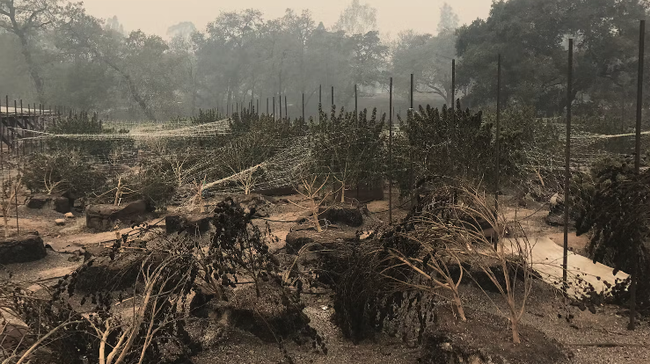Publication

Summary
At the intersection of climate change and rural development, wildfire has emerged as a threat to agriculture in the Western United States. This nexus is particularly problematic for the rapidly developing cannabis industry in California, which includes farms located outside of traditional agricultural zones and within landscapes potentially more prone to wildfire. With the goal of determining whether cannabis is uniquely vulnerable to direct wildfire impacts (in terms of crop loss to burning), we integrated fire hazard severity zone (FHSZ) data, wildfire perimeters, and future burn regime projections in relation to the location and cultivated area of cannabis farming. We then applied descriptive statistics and generalized additive models (GAMs) to compare the location of licensed cannabis farms to other agricultural types in California, including grapes, pasture, and all other general crops combined.
We found cannabis farming was located more often in high and very high FHSZs and closer to wildfire perimeters than any other agricultural type. GAM estimates of likelihood of occurrence in high and very high severity zones were highest for cannabis, even after accounting for spatial clustering of farm types, although there was no reliable difference in predicted distances to wildfire. Cannabis more often occurred in projected (from 2020 to 2100) wildfire hotspots than all other agricultural types, with GAM estimates affirming a reliably higher likelihood of cannabis in future hotspots than pasture or general crops. Our findings highlight cannabis’ particular vulnerability to wildfire in California and may in fact underestimate wildfire risks given the potential indirect impacts of smoke to crops and farmworkers, which were not evaluated in this study. In light of the sector’s growing economic importance in the state, these vulnerabilities should be considered in future cannabis and rural development policies.
